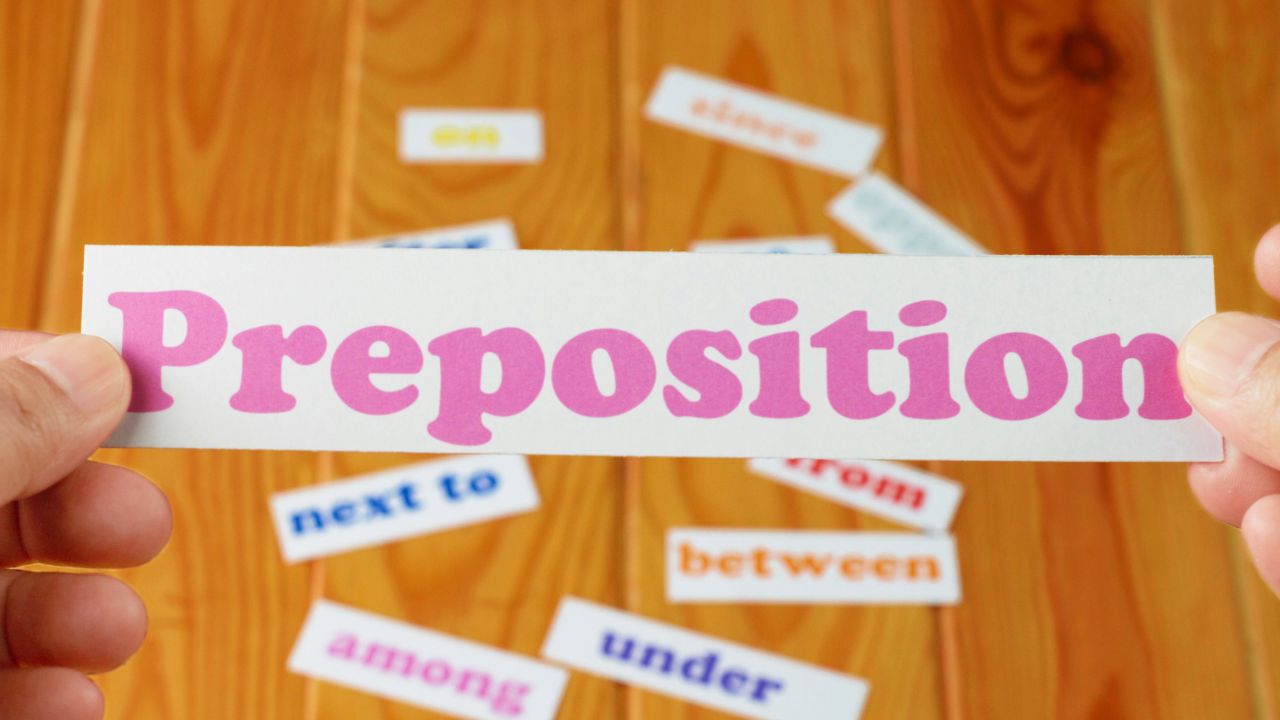Table of Contents [hide]
Welcome to the essential guide to prepositions! Whether you’re a native English speaker or just starting to learn the language, understanding prepositions is crucial. Prepositions can be challenging, but with this guide, you’ll become an expert in no time. From definitions and types to functions and usage, we’ve got it all covered in this comprehensive article. So grab a cup of coffee, sit back, relax and let’s dive into the world of prepositions!
What is a Preposition?
At its core, a preposition is a word that shows the relationship between two or more words in a sentence. It often indicates the position of an object or person in relation to another object or person. For example, “the cat is on the table” uses “on” as a preposition to show where the cat is located.
Prepositions can also indicate time and direction. Examples include “before,” “after,” “above,” and “below.” These words help us understand when something happened or where it’s going.
One thing to keep in mind about prepositions is that they are always used with other words. They never stand alone as their own sentences but instead work together with nouns, pronouns, verbs, adjectives and adverbs.
In English grammar, there are approximately 150 different prepositions that we use every day! While this may seem overwhelming at first glance, don’t worry – by understanding the key types of prepositions and how they function within sentences, you’ll be well on your way towards mastering them all.
Also Read: Exploring Community Service: Definitions, Examples, and Benefits
The Different Types of Prepositions
Prepositions are commonly divided into different types based on their usage. The five main types of prepositions include simple, compound, phrase, participle, and double prepositions.
Simple prepositions consist of a single word such as “in,” “on,” or “at.” These prepositions are used to indicate location, direction, time and other similar concepts.
Compound prepositions contain two or more words like “according to,” “instead of” or “along with.” Compound prepositions perform the same functions as simple ones but add more details to the sentence structure.
Phrase preposition is formed by a group of words that function together as one unit. For example: “in front of”, which means ‘before’ something else in position; “next to”, meaning adjacent or beside; and many others.
Participle Preposition refers to an -ing verb form acting as a noun modifier. Example: “Climbing”, in this sentence: Climbing mountains can be challenging for some people.”
Double Preposition could either be two separate objects working together as one (like inside/outside), two propositions coupled using conjunctions like He went from Paris back home”
Understanding the various types of prepositions will help you use them correctly in your writing and communication. With practice and observation, you’ll quickly master how each type works differently within sentences.
The Functions of Prepositions
Prepositions are not just words that come before nouns or pronouns. They serve a specific function in the sentence, and understanding their role is essential to using them correctly.
One of the primary functions of prepositions is to show relationships between two parts of a sentence. For example, “The book is on the table” shows the relationship between the book and the table. The preposition “on” indicates where the book can be found.
Another function of prepositions is to indicate direction or motion. Examples include “I am going to school,” which uses the preposition “to” to show direction, and “I walked around the park,” which uses “around” to indicate motion.
Prepositions can also express time-related relationships, such as when an action happened relative to another event. For instance, “She left after dinner” demonstrates that someone departed from an area following a meal.
In addition, some prepositions convey meanings beyond their literal definitions by creating idiomatic expressions with particular connotations. Consider “getting on well,” for example: it means more than simply interacting positively with someone else.
Understanding these various functions will help you use prepositions properly in your writing and speech alike!
How to Use Prepositions
When it comes to using prepositions, there are a few things to keep in mind. First and foremost, prepositions always come before nouns or pronouns. This is important because the word that follows the preposition (known as the object of the preposition) will determine which preposition should be used.
It’s also important to note that some verbs require certain prepositions after them. For example, “listen” is often followed by “to,” while “talk” is often followed by “with.” It’s helpful to familiarize yourself with these common verb-preposition pairings so you can use them correctly in your writing.
Another thing to keep in mind when using prepositions is their placement within a sentence. Prepositional phrases usually appear at the beginning or end of a sentence, although they can sometimes appear mid-sentence for emphasis.
It’s crucial to pay attention to idiomatic expressions involving prepositions. For example, we say “get on a bus” rather than “get in a bus,” even though both technically make sense grammatically. These expressions may not always follow typical grammar rules but are commonly used and understood by native speakers.
By following these guidelines and practicing with different examples, you’ll soon become comfortable with using prepositions correctly in your writing!
Commonly Confused Prepositions
Prepositions can be tricky little words, and there are many that are commonly confused due to their similar meanings or usage. Here are a few examples:
Firstly, “in” and “into”. While both indicate movement towards something, “in” implies being inside or within something while “into” indicates the action of going inside. For example: I am in the room vs. I walked into the room.
Secondly, “on” and “upon”. These two prepositions have very similar meanings but differ slightly in tone. Generally, “on” is more casual while “upon” sounds more formal or literary. For example: The book is on the table vs. The knight rode upon his horse.
Thirdly, “among”, “between”, and “amidst”. Although all three refer to relationships between things or people, they have different nuances; use among when talking about three or more items/people; use between for two things/people; and use amidst for an object/person within a larger group/setting.
It’s important to pay attention to these small differences as using them incorrectly can change the meaning of your sentence entirely!
Also Read: Understanding “CBNA” on Your Credit Report: A Comprehensive Overview
Conclusion
Prepositions are essential elements of language that help us create meaningful and grammatically correct sentences. Understanding the different types of prepositions, their functions, and how to use them correctly is crucial for effective communication in both spoken and written language.
By following the guidelines outlined in this guide to prepositions, you can improve your writing skills and avoid common mistakes such as using incorrect or misplaced prepositions.
Remember to always pay close attention when using prepositions in your writing or speech. With time and practice, you will develop a better understanding of how these words function within a sentence, leading to more confident and articulate communication.
So go ahead – explore the world of prepositions with confidence!











